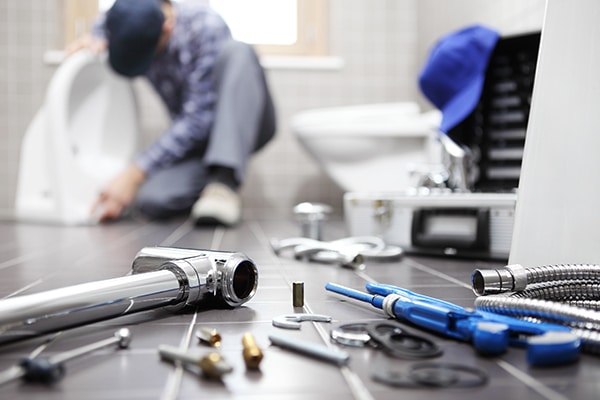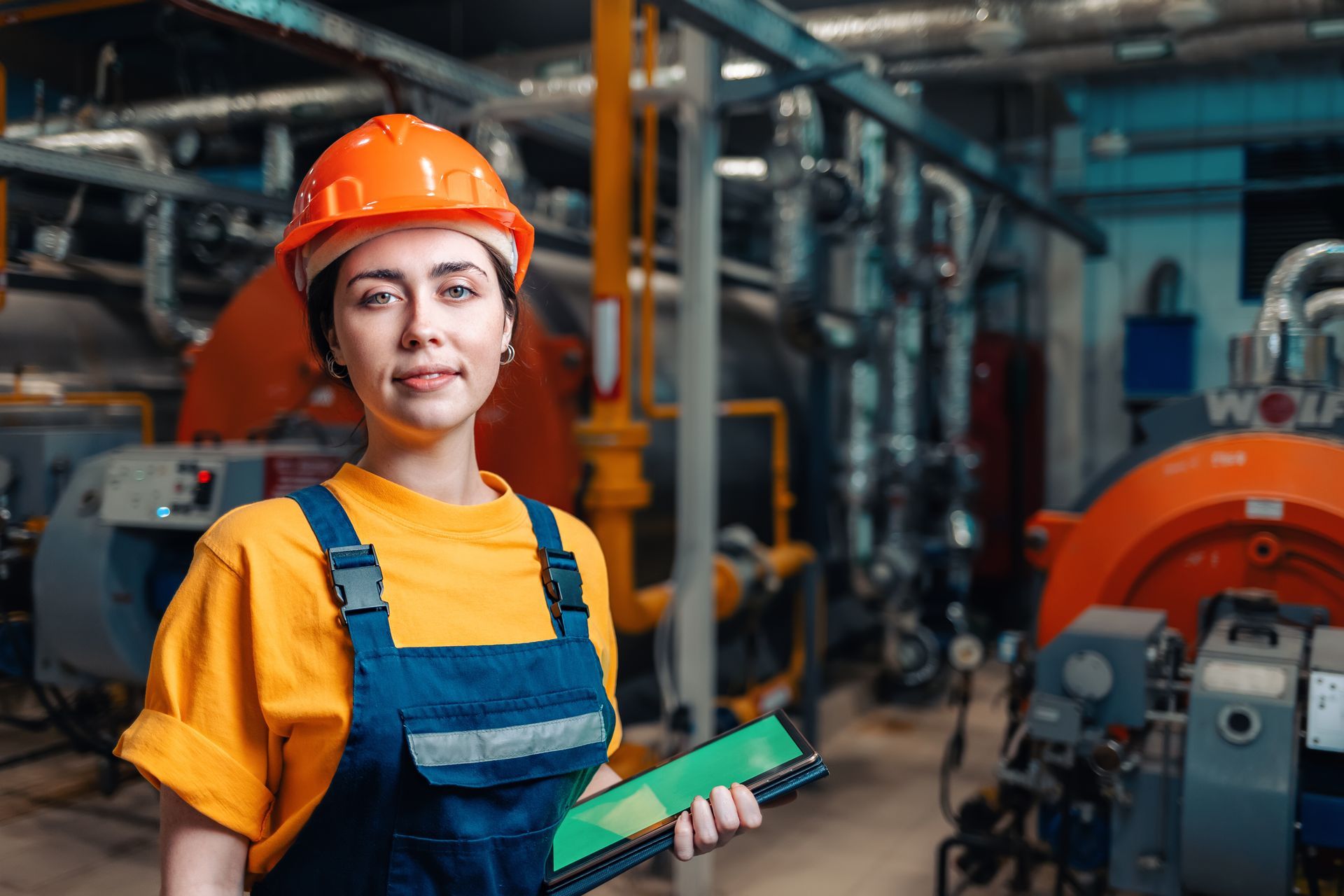Just how do you feel about 7 Plumbing Industry Trends You Need To Know?

Introduction
The plumbing industry is going through a transformative stage driven by technical innovations and growing problems for sustainability and efficiency. This short article checks out arising fads and technologies forming the future of plumbing.
Smart Pipes Equipments
Integrating wise technology right into plumbing systems enables remote tracking, leakage detection, and automated maintenance. Smart sensing units and IoT (Net of Things) tools permit property owners and plumbing professionals to keep an eye on water use and identify problems in real-time, bring about much more reliable source monitoring and positive maintenance.
Water Efficiency Solutions
With boosting emphasis on water conservation, cutting-edge solutions are being developed to lessen water wastefulness in plumbing systems. High-efficiency components, greywater recycling systems, and clever irrigation controllers are amongst the technologies aiding customers lower their water footprint while preserving comfort and ease.
Lasting Materials
The shift in the direction of sustainability extends to pipes materials, with an expanding preference for environment-friendly choices. Eco-friendly piping products, such as PEX (cross-linked polyethylene) and HDPE (high-density polyethylene), offer resilience and resistance to deterioration without endangering environmental stability.
Anticipating Upkeep
Anticipating upkeep techniques utilize data analytics and artificial intelligence algorithms to prepare for and stop pipes concerns prior to they happen. By analyzing historic information and performance metrics, anticipating upkeep algorithms can identify patterns and abnormalities, allowing positive interventions to avoid expensive fixings and disruptions.
Increased Fact in Pipes
Augmented Fact (AR) modern technology is revolutionizing plumbing by offering technicians with real-time aesthetic guidance for fixing and repair tasks. AR-enabled smart glasses or mobile applications overlay digital information onto the physical setting, helping plumbing technicians visualize pipeline layouts, determine surprise leakages, and implement repair work with precision.
Effect of 3D Printing
The development of 3D printing has actually presented new possibilities in manufacturing plumbing elements. From custom-designed fixtures to complex pipe fittings, 3D printing allows for rapid prototyping and on-demand manufacturing, lowering preparations and making it possible for better modification in plumbing layout.
Health and Safety Qualities
In feedback to enhanced issues for health and wellness, pipes fixtures are incorporating features such as antimicrobial surface areas, touchless operation, and self-cleaning devices. These technologies not only boost health but also promote individual comfort and convenience.
Hygiene-focused Fixtures
Touchless faucets, self-sanitizing bathrooms, and antimicrobial surface areas are ending up being significantly common in residential and business settings, decreasing the threat of germ transmission and promoting a cleaner, healthier environment.
Water Quality Surveillance
Improvements in water top quality surveillance innovations enable house owners to keep track of the pureness and safety of their supply of water in real-time. Smart water high quality sensors can find pollutants, pH degrees, and temperature variants, empowering users to take proactive procedures to make certain water safety.
Remote Pipes Services
Remote diagnostics and online help are reinventing the means pipes services are supplied. Via video conferencing and remote access modern technologies, plumbing technicians can repair problems, give support for do it yourself repairs, and also execute remote inspections, using better availability and benefit to homeowners.
Obstacles and Opportunities
While plumbing developments hold enormous guarantee, they also present challenges such as data privacy concerns, governing conformity, and the demand for workforce training. Resolving these difficulties calls for collaboration in between sector stakeholders and regulatory bodies to guarantee secure and accountable execution of new technologies.
Regulative Landscape
Governing frameworks play a crucial duty in shaping the adoption of plumbing developments, with criteria and codes governing every little thing from water efficiency to product security. As modern technologies remain to progress, regulative bodies must adapt to make sure customer defense and ecological stewardship.
Future Outlook
The future of pipes is defined by proceeded development and integration with other fields such as IoT, renewable resource, and building automation. By accepting sustainable practices, leveraging emerging innovations, and prioritizing user-centric style, the pipes industry is poised to deal with the developing requirements of culture while lessening its environmental impact.
Final thought
In conclusion, the future of plumbing is specified by a convergence of innovation, sustainability, and user-centric design. By accepting clever remedies, lasting products, and proactive maintenance practices, the plumbing sector can improve efficiency, advertise security, and add to a much more sustainable future.
The Future of Plumbing: Trends and Innovations to Watch
Introduction to Future Plumbing Trends
The future of plumbing is being shaped by several key factors, including technological advancements, environmental concerns, and changing consumer expectations. These factors are driving the development of new products, services, and practices that enhance the efficiency, sustainability, and convenience of plumbing systems.
Key Trends and Innovations in Plumbing
Smart Plumbing Systems: The integration of smart technology into plumbing systems is transforming the way we manage water usage and detect issues. Smart leak detectors, automated water shut-off valves, and smart faucets are just a few examples of how technology is enhancing plumbing systems. These devices provide real-time data and remote control capabilities, allowing homeowners to monitor and manage their water usage more effectively. Water Conservation and Efficiency: With increasing concerns about water scarcity, there is a growing emphasis on water conservation and efficiency. Innovations such as low-flow fixtures, greywater recycling systems, and rainwater harvesting are becoming more popular. Plumbers are adopting these technologies to help customers reduce their water consumption and save on utility bills. Sustainable Materials: The use of sustainable materials in plumbing systems is gaining traction. This includes the adoption of recyclable and biodegradable materials, as well as the use of non-toxic and eco-friendly products. Sustainable materials help reduce the environmental impact of plumbing systems and promote long-term sustainability. Energy-Efficient Water Heaters: Advances in water heating technology are leading to the development of more energy-efficient systems. Tankless water heaters, solar water heaters, and heat pump water heaters are becoming more prevalent. These systems offer significant energy savings and reduce the carbon footprint of homes and businesses. Trenchless Technology: Trenchless technology is revolutionizing the way plumbing repairs and installations are conducted. This method allows for the repair or replacement of pipes without extensive excavation, minimizing disruption and reducing costs. Techniques such as pipe bursting and cured-in-place pipe (CIPP) lining are gaining popularity. Health and Safety: The focus on health and safety is driving innovations in plumbing systems. Touchless faucets and fixtures, antimicrobial materials, and improved water filtration systems are being developed to enhance hygiene and protect public health. Plumbers are adopting these innovations to meet the growing demand for safer and healthier plumbing solutions. Remote Diagnostics and Monitoring: The ability to diagnose and monitor plumbing systems remotely is becoming increasingly important. Remote diagnostic tools and sensors allow plumbers to identify issues and perform maintenance without the need for on-site visits. This enhances efficiency and reduces the need for costly emergency repairs. Impact of Future Trends on the Plumbing Industry
Enhanced Efficiency: The adoption of smart technology and energy-efficient systems will enhance the efficiency of plumbing systems. This will lead to reduced water and energy consumption, lower utility bills, and improved performance. Sustainability: The focus on sustainability will drive the development and adoption of eco-friendly plumbing solutions. This will contribute to the conservation of natural resources, reduction of waste, and protection of the environment. Improved Customer Experience: The integration of technology and innovative solutions will improve the customer experience. Homeowners will have greater control over their plumbing systems, access to real-time data, and the ability to manage their water usage more effectively. Increased Demand for Skilled Plumbers: The adoption of new technologies and materials will require plumbers to acquire new skills and expertise. There will be an increased demand for skilled plumbers who are knowledgeable about the latest trends and innovations. Cost Savings: The use of efficient and sustainable plumbing solutions will result in cost savings for both homeowners and businesses. Reduced water and energy consumption, lower maintenance costs, and fewer emergency repairs will contribute to overall affordability. Preparing for the Future of Plumbing
Stay Informed: Keep up-to-date with the latest trends and innovations in the plumbing industry. Attend industry conferences, participate in training programs, and engage with manufacturers to stay informed. Invest in Training: Ensure that you and your team are trained in the latest technologies and installation techniques. This will enable you to offer cutting-edge solutions to your customers and stay competitive in the market. Promote Sustainable Solutions: Highlight the benefits of eco-friendly and energy-efficient plumbing solutions to your customers. Educate them about the advantages of adopting sustainable practices and products. Leverage Technology: Embrace smart technology and remote diagnostic tools to enhance your services. Offer remote monitoring and maintenance options to provide added convenience and value to your customers. Collaborate with Manufacturers: Partner with manufacturers of innovative plumbing products to gain access to the latest solutions and technical support. This can also provide opportunities for joint marketing efforts. Focus on Customer Education: Educate your customers about the benefits and functionality of new plumbing technologies. Provide guidance on how to use smart systems and maintain sustainable plumbing solutions. Conclusion
The future of plumbing is being shaped by exciting trends and innovations that promise to enhance efficiency, sustainability, and convenience. By staying informed and embracing these changes, plumbers can provide superior services to their customers and contribute to a more sustainable future. The adoption of smart technology, sustainable materials, and energy-efficient systems will drive the evolution of the plumbing industry, creating new opportunities and challenges. By preparing for the future, plumbers can ensure their success in a rapidly changing market.

We are very drawn to The Future of Plumbing: Trends and Innovations to Watch and I hope you liked the new post. Are you aware of another person who is curious about the subject? Take a moment to share it. Many thanks for going through it.
Show Details